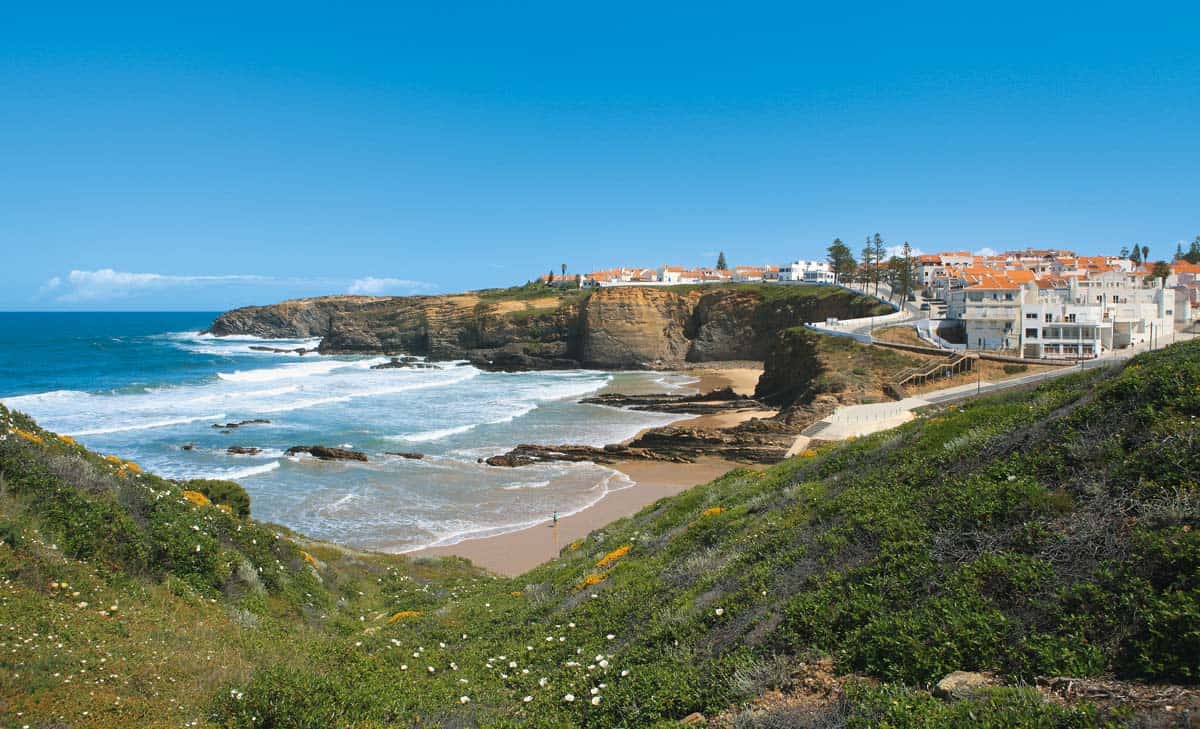
Editor’s Note: We share travel destinations, products and activities we recommend. If you make a purchase using a link on our site, we may earn a commission.
If you look at Portugal’s Alentejo on a map, it has some clear borders: The Tejo River Valley to the North; The Atlantic to the West; Mountains, rivers and Spain to the East; Mountains to the South.
This creates a unique climate – warm and dry summers, mild and misty winters. But the topography differs from the rest of Portugal too; as there are miles and miles of plains, olive groves, wine estates, and the occasional hilly terrain on the edges.
In effect, this means that the perspective you have over the landscape is sweeping, with little to stop your view from going on for miles and miles, and the higher up you go, the more you see. Like from a castle, or a hot air balloon.
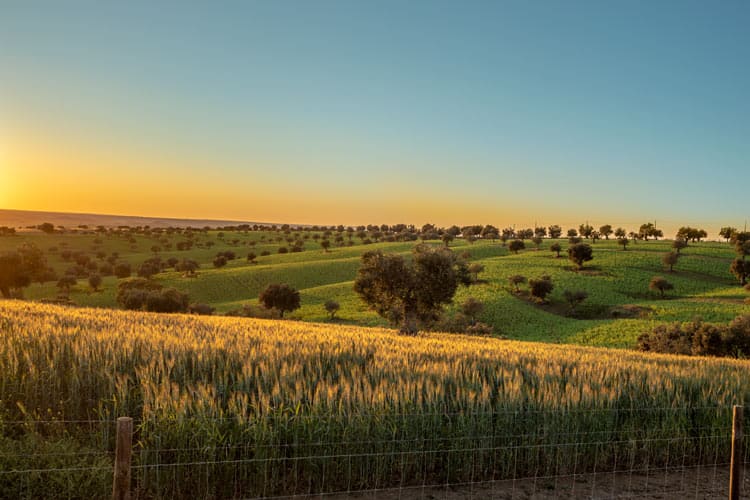
Where is the Alentejo?
The Alentejo, a historical and cultural region of south central and southern Portugal, is not known for its clouds, but rather its lack of clouds. And the blending of an open blue sky with the green and yellow plains and the lakes and rivers leads to a unique shade of blue.
Occupying nearly a third of the mainland, this picturesque region is an hour’s drive from Lisbon. It is bound to the north by the river Tejo, and by mountains to the south.
Spain and the River Guadiana mark the border to the east, and the open Atlantic is the border to the west.
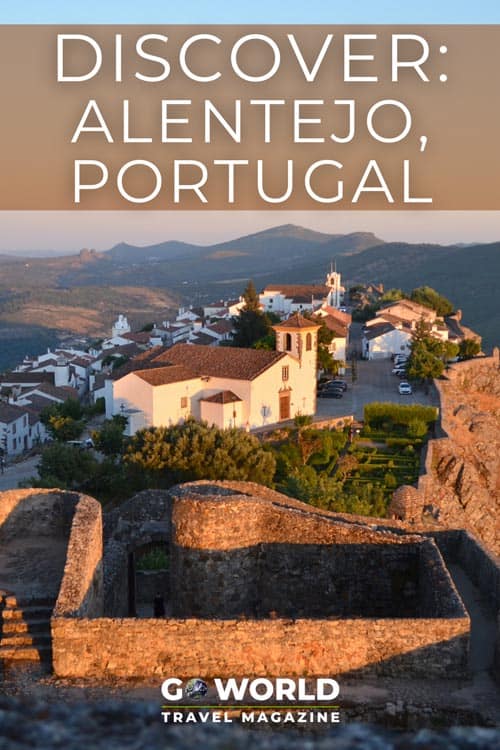
Dialect
The Portuguese often refer to the Alentejo, with its own dialect, strong Moorish flavor, whitewashed towns, and unique songs, as its own nation.
Most towns seem to float on hilltops above the plains, embraced by a castle. Gothic towers and red tiles rise from the venerable walls. The songs of the Alentejo, with a flavor of coriander and garlic, greet the visitor.
During the summer, the green stands of cork oaks turn the flowing plains of the Alentejo into a romantic and enchanting place of sun and shadows.
Wine estates, olive groves, or a white and blue house on a hill occasionally interrupts these ancient forests, which have produced cork for millennia. After the bark is harvested, the trees light up the day with their red hues, a sign of the only tree that has a renewable bark.
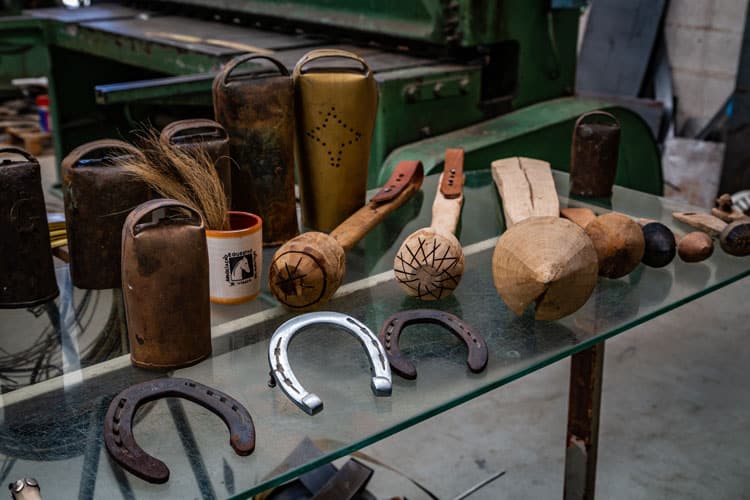
Alentejo Blue
Now we all know that the sky is not really blue – what gives it that tone is light. As the light of the sun with all the colors of the spectrum passes through air, the blue portion causes charged particles to oscillate.
The more sunlight entering the sky, the bluer it appears to our eyes – and the Alentejo with its mainly open skies, lack of pollution or clouds, offers the eyes a deep and unique blue. Climate, location and air quality all combine to offer the Alentejo blue.
To appreciate it you just have to see it – and then you will know.
So, it should come as no surprise that the two colors most common on a typical Alentejo house are blue and white, literally reflecting the sky.
It needs to also be pointed out that in the Northern reaches of the Alentejo houses tend to be yellow and white, in places such as Nisa. But that reminds me of the sun.
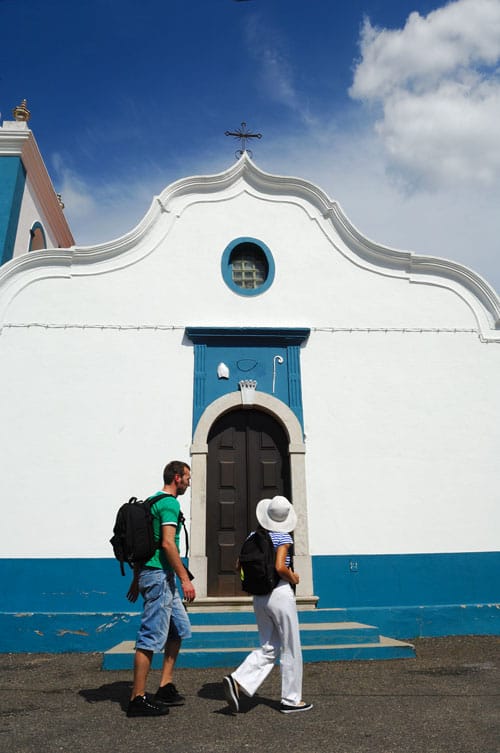
Alentejo Wine
So, next, we need to put all the light into context – it fuels the local economy. In recent decades, the Alentejo has emerged as Portugal’s most dynamic wine region.
The long, sunny summers, with a touch of Atlantic influence, have led to some outstanding wines. Reguengos and Borba wines are winning fame, but I love the wines from Redondo, Portalegre and Evora too.
The quality of the light is essential to the unique character of the Alentejo wines, as are the grape varietals and the soil and these wines offer a wonderful taste of the brightness of the region.
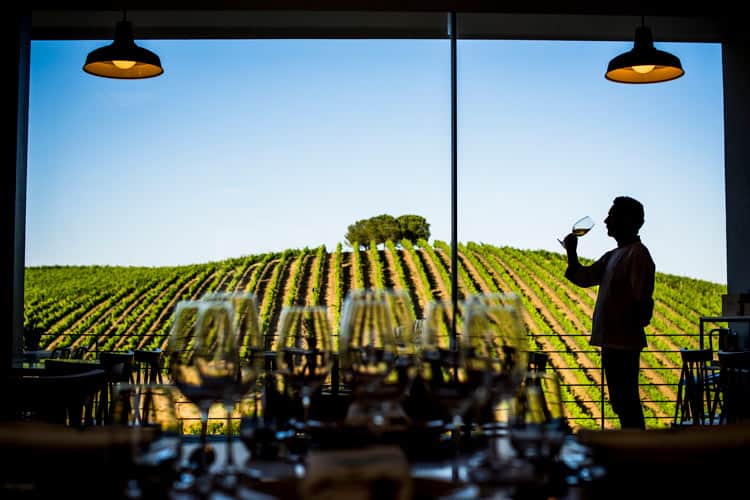
Alentejo Olives
And where you have grapes, you have olives – and few would dispute that some of the finest olive oil in the world, not just Portugal, is pressed in the Alentejo.
The area between Moura and Serpa, on the banks of the Guadiana River, has some extraordinarily good olive oils – and it is one of those things where seeing is believing.
Visit the estates that grow and press the olives, and then visiting the museums and groves you come to understand how the beauty of the light in these rolling hills gives us a magnificent oil.
Now head to the coast. The Estuary of the Sado River has been famous for its salt for centuries. Known for its pinkish color, the saltpans here use the sun to dry seawater and yield wonderful natural sea salt.
Now, after years of decline, the salt trade is back, and the famous salt of the Sado is available to experience and purchase.
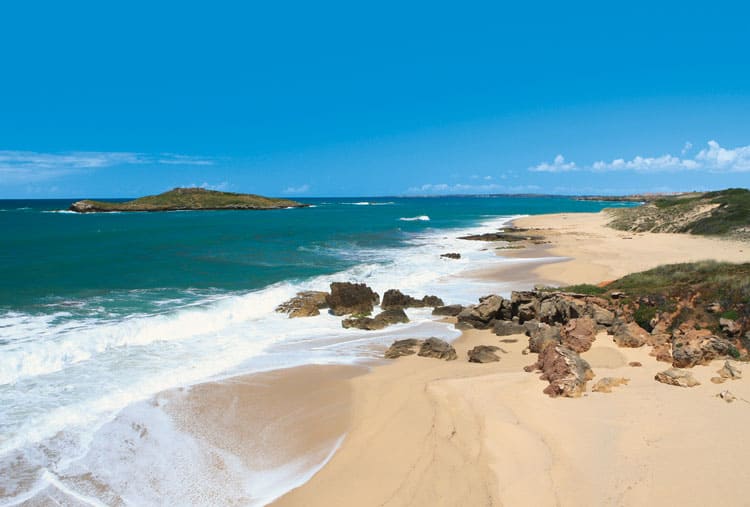
Sunflowers
Another wonderful way you see the light in the Alentejo is the endless field of sunflowers. They line roads and offer stunning vistas. They fill the plains between the Montados, the abundant cork forest that protects a unique ecosystem.
Light also plays a part in the region’s past. The Roman’s came to the Alentejo as farmers and the ruins of their elaborate villas are found throughout the region. They loved the sun – and the warmth it gave off.
They cultivated wines and made their famous fish sauce – leaving behind a unique legacy. The Roman’s dominance was followed by centuries of North African civilization, revolutionizing agriculture, and building centers of culture and trade.
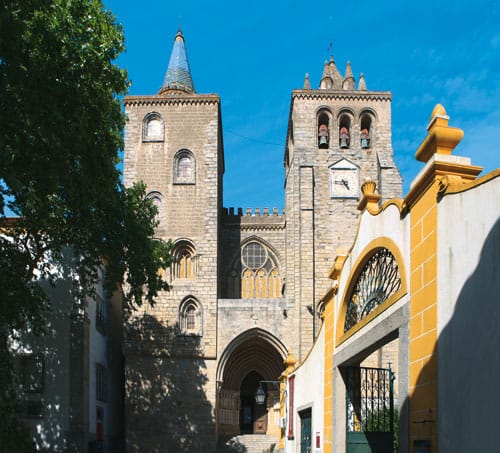
Monuments in the Alentejo
Today, some of the best views of the beauty of the Alentejo come from its venerable monuments. Ancient sites, dating back to prehistory show that the earlier humans who lived in the Alentejo were keen followers of the sun, with stone circles and stone altars being scattered through the region.
In fact, these sacred sites are some of the best-preserved on the Iberian Peninsula.
Castles
Then there are the castles, I love to climb the parapets of the castle of Marvão and enjoy the view- with easy vistas stretching for hundreds of miles from the impressive fortress.
This castle is far from alone, with dozens of other strongholds on hilltops offering great points to see and enjoy the light. And for the faithful, the Camino de Santiago crossed the plains as pilgrims followed the light, and you can hike the very same path today as well.
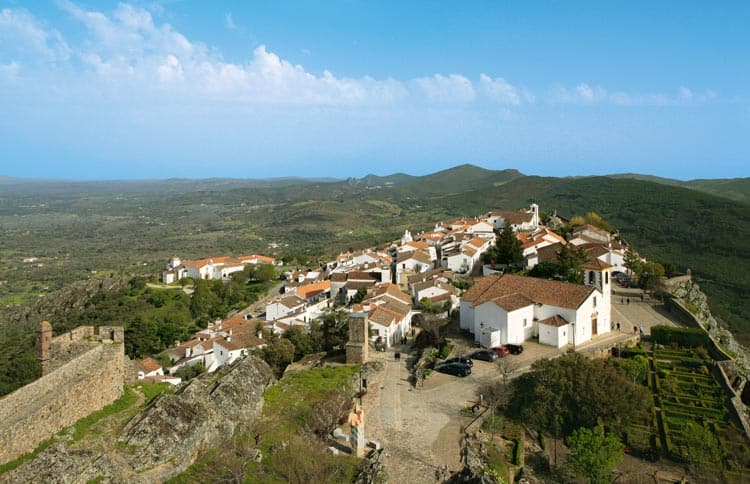
Dark Sky in the Alentejo
But what about the night, when a new light comes in the clear sky – and the universe’s greatest light show arrives with 4,000 stars and the Milky Way.
Dark Sky Alqueva in the Alentejo was the first official Starlight Tourism Destination in the world, with a reserve that covers 4,000 square miles around The Great Lake of Alqueva.
The reserve is made up of the towns of Alandroal, Barrancos, Moura, Mourão, Reguengos de Monsaraz, Portel, Évora, Mértola and Serpa. Dark Sky Alqueva offers a diversity of daytime and nighttime activities.

The open plains around Alqueva are a thrill both during the day and at night. The vast lake is set between two fortified towns.
Dark Sky Alqueva also has a network of partners, such as the Alqueva Dark Sky Route, which oversees the accommodations and tourist activities in the area. These include hiking, horseback riding, nighttime canoeing, boat excursions on the lake, hot-air balloon rides, paddle boarding, and sports.
In addition to these activities, there is Solar System yoga, photographic tours and workshops, wine tours, birding, wildlife watching, and more.
So you see, day or night, the light never fades in the Alentejo.
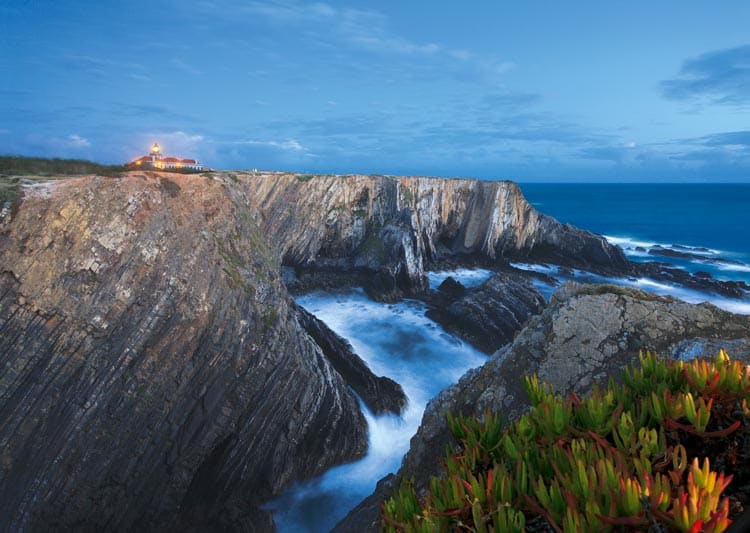
Book This Trip
Ready to explore the diverse beauty of Alentejo, Portugal? Start planning your trip with hotel and VRBO options, local restaurant recommendations, tips on how to get around and more through TripAdvisor and Travelocity. When you are ready to book, check out CheapOair for exclusive flight promotions and ground transportation reservations.
Author’s Bio: Jayme H. Simões is a travel blogger on Portugal. He grew up in Chicago but spent summers exploring Portugal with his family.
- 6 Reasons to Visit Riga, Latvia Any Time of Year - April 18, 2024
- Travel Guide to Austria - April 17, 2024
- Travel Guide to Italy - April 17, 2024
